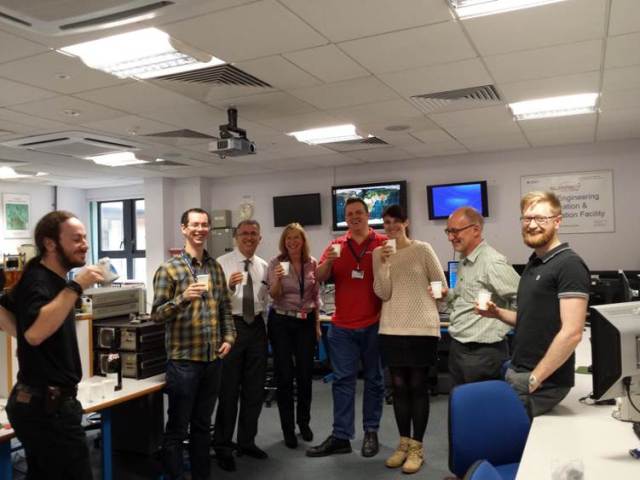Chris Bridges 2E0OBC of the Surrey Space Centre provides this update on the status of the DeorbitSail Cubesat.
Dear AMSAT Community,
We would like to express our gratitude for your cooperation in the DeorbitSail project, and update you on the status of the mission.
As you know the DOS mission was launched on 10th July. After 4 months of operations, the satellite is healthy and stable, although unfortunately we have not been able to meet all of the mission objectives. Initial contact with the satellite was established relatively smoothly and we received a lot of good data, both through our own ground station but also via the network of you radio amateurs who have been very generous with your time and help.
We achieved a power stable state early on, with good comms (uplink and downlink) established within the first few days. We deployed the solar panels successfully, and managed to return to a good and stable power state after deployment. The ADCS has been challenging from the start, and continues to be challenging – we have struggled to accurately determine the satellite tumble rate and get it under control (more detail on that is included below). We know that the satellite has seen some very high spin rates for various reasons, including some inherent design/magnetic characteristics which have become apparent.
Despite many attempts, we have unfortunately not been able to deploy the sail, and having recently thoroughly analysed and investigated the possible causes, mission events and ground test data and history, we are now reaching the conclusion that achieving successful sail deployment is very unlikely. Again there is more detail on that in the main body of text below.
We thank you for your patience and would like to apologise for not keeping you updated on mission progress as often as we’d hoped. The operations phase has been a learning and sometimes stressful experience for all of the team at SSC, with a lot of head scratching and sleepless nights involved.
Here is some more detailed information regarding what progress and achievements have been made during the operations to date.
• After the launch on the 10th of July, and the first week in orbit, with a power safe and healthy satellite, the operation passed from the LEOP phase to the ADCS Commissioning phase. This second phase was estimated to last between three and four weeks; this proved to be optimistic.
• Although the spin up of the S/C was much higher than expected and saturated the sensors, the SU simulations and the available data suggested a large Z-spin rate on DOS which was confirmed by the B-field and MEMS magnetometry measurements. To induce a bigger difference in the Moments of Inertia (MoI) of the two non-longitudinal axes, the decision was taken to deploy the solar panels. This operation was performed the 10th of August.
• More than a month after the launch the satellite was really healthy, power safe and with great comms through newly developed software defined radio and database backend operations. Although the stabilization wasn’t achieved even with the solar panel deployment, at one month from the launch the team decide to proceed with the sail deployment.
• This decision was agreed with DLR that confirmed that tumbling rates were no issue for the sail deployment, because the Moments of Inertia increase rapidly slowing down the tumble rate. DLR has performed a deployment test on Gossamer while tumbling before coming to this opinion.
• On the 15th of August, the first attempt for sail deployment was performed, the command was sent and the acknowledgement from the S/C was received, but no current was drawn from the boom deployer motor. Multiple experiments were performed to try and determine the cause of sail deployment failure.
• At this point, after a thorough investigation, the most plausible hypothesis and justification seems to be a physical disconnection of the motor cables. (Note that after the vibration test, it wasn’t possible to physically inspect the connection due to the design itself of the S/C)
Our simulations showed that with the actual configuration (deployed solar panels, undeployed sail) the decay time should be 20 years circa.
The aim now is to exercise and exploit the parts of the satellite that are working, and gain more confidence and experience with the SU ADCS system, the ISIS TRXUV and solar panels, and the SSC SDR groundstation and database tools to explore better the interaction of the panel circuitry with the attitude stabilisation. That will allow us to improve our performances in the next missions.
From here, the team have worked hard to take images of the Earth and via SU’s CubeSense camera – which we are delighted to show you today. This would not be possible without the dedication from the SSC team here and, of course, the amateur telemetry you kindly send us. We are going to continue imaging and testing at higher resolutions too so watch this space.
We thank you for all the support.
Chiara Massimiani, DOS Project manager & Prof Guglielmo Aglietti SSC Director and DOS PI
DeorbitSail http://amsat-uk.org/satellites/telemetry/deorbitsail/
Surrey Space Centre http://www.surrey.ac.uk/ssc/research/space_vehicle_control/deorbitsail/
![]()


